Discover 15 hidden attractions, cool sights, and unusual things to do in Nagasaki (Japan). Don't miss out on these must-see attractions: Glover Garden, Prefectural Art Museum, and Nagasaki Peace Park. Also, be sure to include Oura Catholic Church in your itinerary.
Below, you can find the list of the most amazing places you should visit in Nagasaki (Nagasaki).
Table of Contents
Glover Garden
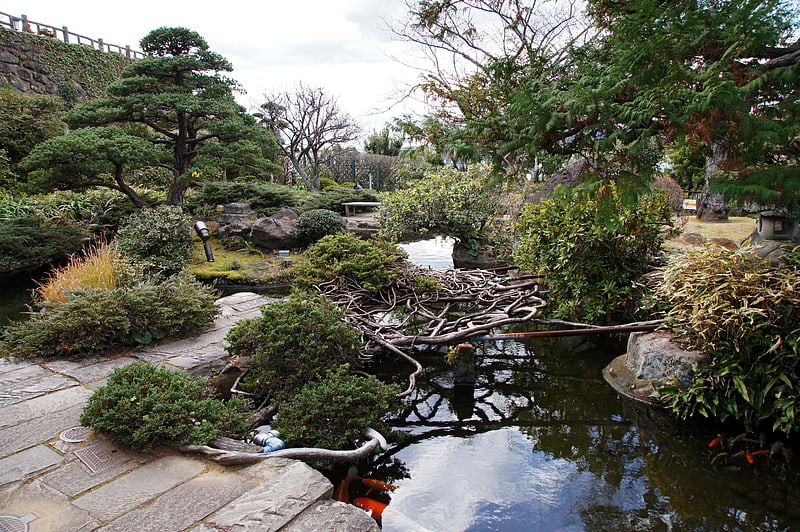
Also known as: グラバー園
Museum in Nagasaki. Glover Garden is a park in Nagasaki, Japan, built for Thomas Blake Glover, a Scottish merchant who contributed to the modernization of Japan in shipbuilding, coal mining, and other fields. In it stands the Glover Residence, the oldest Western-style house surviving in Japan and Nagasaki's foremost tourist attraction.
It is located on the Minamiyamate hillside overlooking Nagasaki harbor. It was built by Hidenoshin Koyama of Amakusa island and completed in 1863. It has been designated as an Important Cultural Asset. As the house and its surroundings are reminiscent of Puccini's opera, it is also known as the "Madame Butterfly House." Statues of Puccini and diva Miura Tamaki, famed for her role as Cio-Cio-san, stand in the park near the house. This house was also the venue of Glover's meetings with rebel samurai, particularly from the Chōshū and Satsuma domains.[1]
Address: 8-1 Minamiyamatemachi, 850-0931 Nagasaki
Prefectural Art Museum

Museum in Nagasaki, Japan. Nagasaki Prefectural Art Museum opened in Nagasaki, Nagasaki Prefecture, Japan, in 2005. The collection comprises artworks relating to Nagasaki as well as works of Spanish art collected by Suma Yakichiro, special envoy to Spain during the Second World War. Alongside the Nagasaki Museum of History and Culture, which opened the same year, it supersedes and replaces the former Nagasaki Prefectural Museum and Art Museum, which closed at the end of 2002.[2]
Address: 2-1 Dejima-machi, Nagasaki
Nagasaki Peace Park
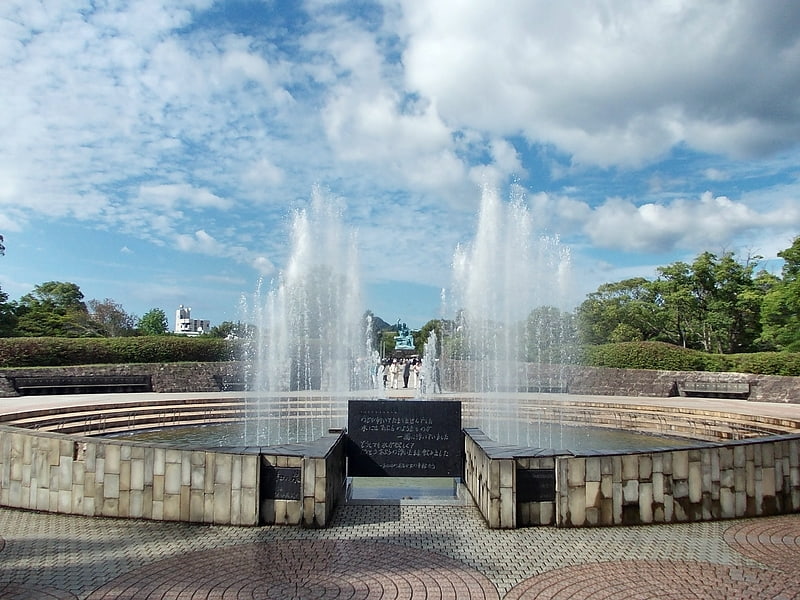
Also known as: 平和公園
Commemorative park honoring bomb victims. Nagasaki Peace Park is a park located in Nagasaki, Japan, commemorating the atomic bombing of the city on August 9, 1945 during World War II. It is next to the Atomic Bomb Museum and near the Peace Memorial Hall.[3]
Oura Catholic Church
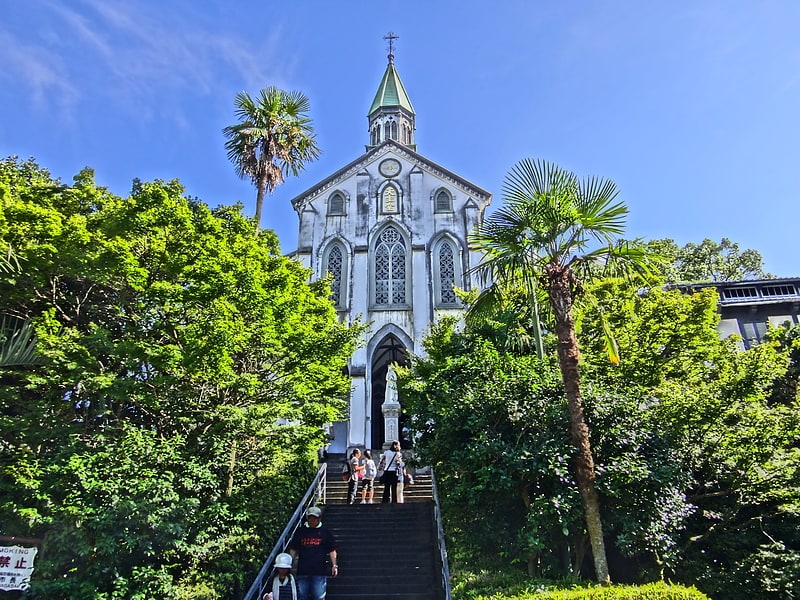
Also known as: 大浦天主堂
Landmark 19th-century Catholic church. The Basilica of the Twenty-Six Holy Martyrs of Japan also Ōura Church is a Roman Catholic minor basilica and Co-cathedral in Nagasaki, Japan, built soon after the end of the Japanese government's Seclusion Policy in 1853. It is also known as the Church of the 26 Japanese Martyrs. For many years it was the only Western-style building declared a national treasure, and is said to be the oldest church in Japan.[4]
Address: 5-3 Minami-yamatemachi, 850-0931 Nagasaki
Nagasaki Atomic Bomb Museum
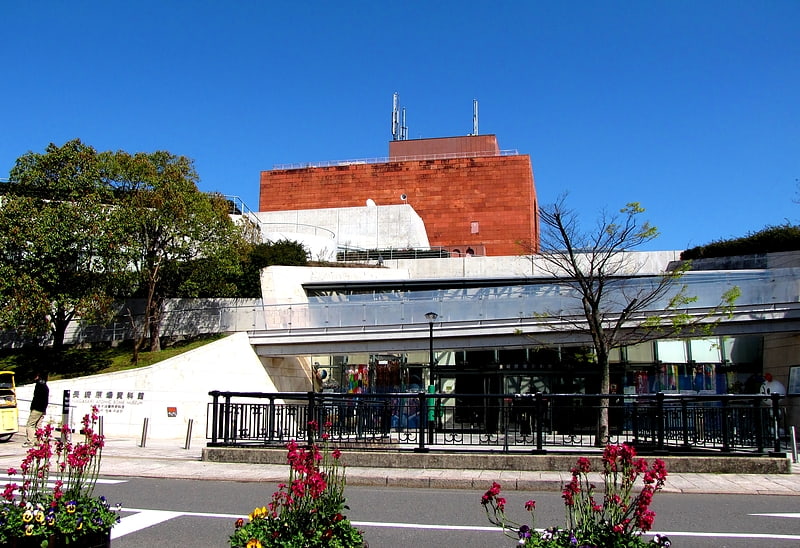
Also known as: 長崎原爆資料館
Exhibits about the 1945 nuclear attack. The Nagasaki Atomic Bomb Museum is in the city of Nagasaki, Japan. The museum is a remembrance to the atomic bombing of Nagasaki by the United States of America 9 August 1945 at 11:02:35 am. Next to the museum is the Nagasaki National Peace Memorial Hall for the Atomic Bomb Victims, built in 2003. The bombing marked a new era in war, making Nagasaki a symbolic location for a memorial. The counterpart in Hiroshima is the Hiroshima Peace Memorial Museum. These locations symbolize the nuclear age, remind visitors of the vast destruction and indiscriminate death caused by nuclear weapons, and signify a commitment to peace.
The Nagasaki museum was completed in April 1996, replacing the deteriorating International Culture Hall. The museum covers the history of the event as a story, focusing on the attack and the history leading up to it. It also covers the history of nuclear weapons development. The museum displays photographs, relics, and documents related to the bombing.[5]
Address: 7-8 Hirano-machi, Nagasaki
Dejima
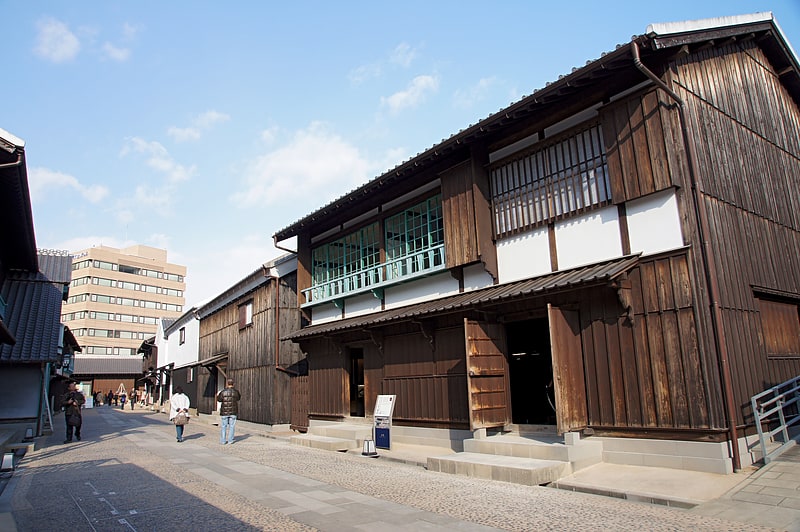
Also known as: カピタン
VOC opperhoofden in Japan were the chief traders of the Dutch East India Company in Japan during the period of the Tokugawa shogunate, also known as the Edo period.
Opperhoofd is a Dutch word (plural opperhoofden) which literally means 'supreme head'. In its historical usage, the word is a gubernatorial title, comparable to the English chief factor, for the chief executive officer of a Dutch factory in the sense of trading post, as led by a factor, i.e. agent. The Japanese called the Dutch chief factors kapitan (from Portuguese capitão).
The Dutch East India Company was established in 1602 by the States-General of the Netherlands to carry out colonial activities in Asia. The VOC enjoyed unique success in Japan, in part because of the ways in which the character and other qualities of its Opperhoofden were perceived to differ from other competitors.[6]
Address: 6-1 Dejimamachi, 850-0862 Nagasaki
Immaculate Conception Cathedral
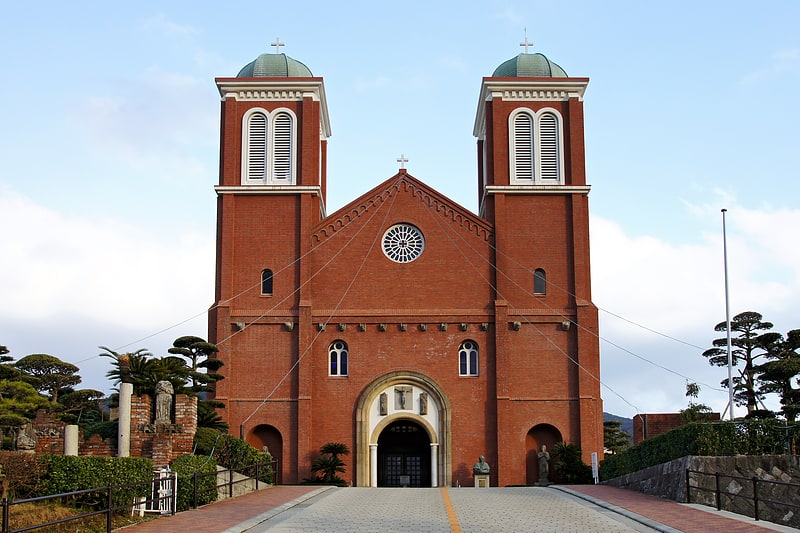
Also known as: カトリック浦上教会
Catholic church and WWII atomic bomb site. The Immaculate Conception Cathedral also St. Mary's Cathedral, often known as Urakami Cathedral after its location Urakami, is a Roman Catholic cathedral located in Motoomachi, Nagasaki, Japan.[7]
Mount Inasa
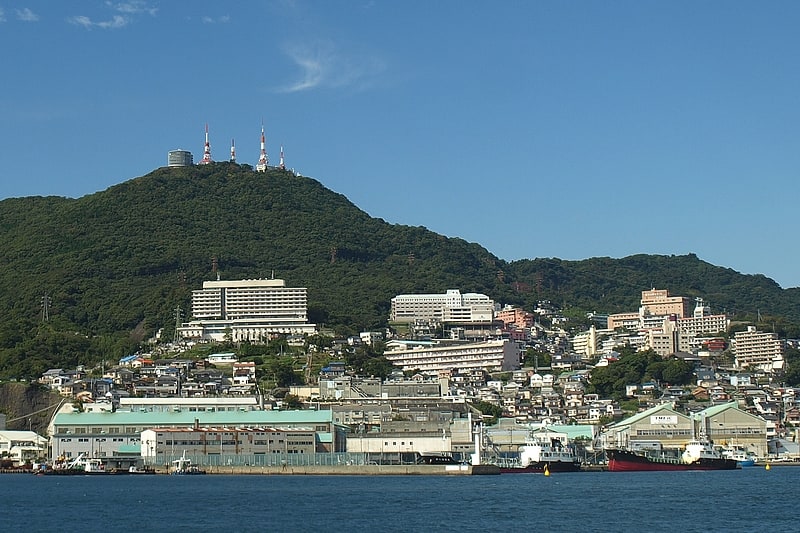
Also known as: 稲佐山
Hill in Japan. Mount Inasa is a hill to the west of Nagasaki which rises to a height of 333 metres. The Nagasaki Ropeway allows visitors to travel to the top from Nagasaki. A short walk from the cable car station are several buildings that house transmitters for TV and radio stations that serve Nagasaki and the surrounding area.
There is an observation platform that is popular with tourists as it provides extensive views of Nagasaki's "10 Million Dollar Night View" (1000万ドルの夜景, Issenmandoru no yakei).[8]
Suwa Shrine
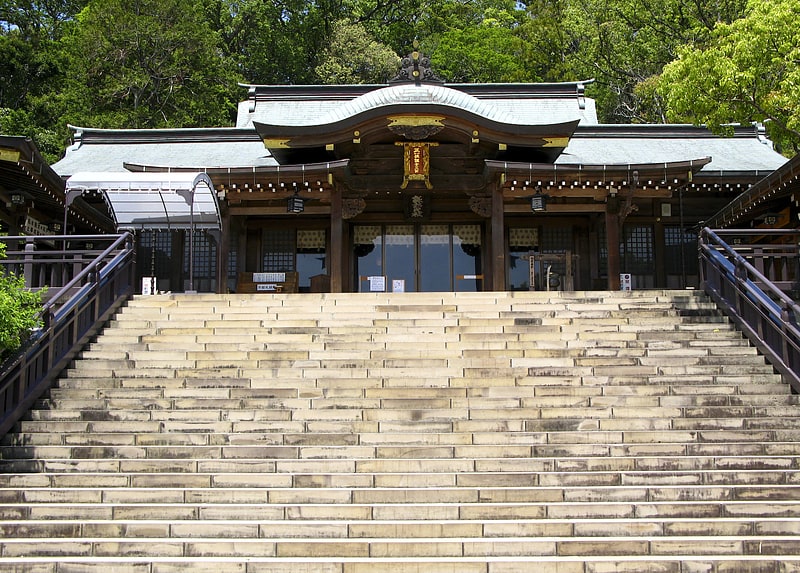
Also known as: 鎮西大社諏訪神社
Prominent Shinto shrine with many stairs. Suwa Shrine is the major Shinto shrine of Nagasaki, Japan, and home to the Nagasaki Kunchi. It is located in the northern part of the city, on the slopes of Mount Tamazono-san, and features a 277-step stone staircase leading up the mountain to the various buildings that comprise the shrine.
Suwa shrine was established as a way of stopping and reverting the conversion to Christianity that was taking place in Nagasaki. In modern times it remains an important and successful center of the community.
The shrine in Nagasaki is one of many Suwa shrines, all of which are dedicated to Suwa-no-Kami, a kami of valor and duty, and are linked with Suwa Taisha, the head shrine of Suwa-no-Kami worship. Two other kami spirits are also enshrined at Suwa shrine, all three of which are celebrated during the Kunchi.[9]
Address: Hakushucho Shimokyoraishi, 408-0317 Hokuto
Sōfuku-ji
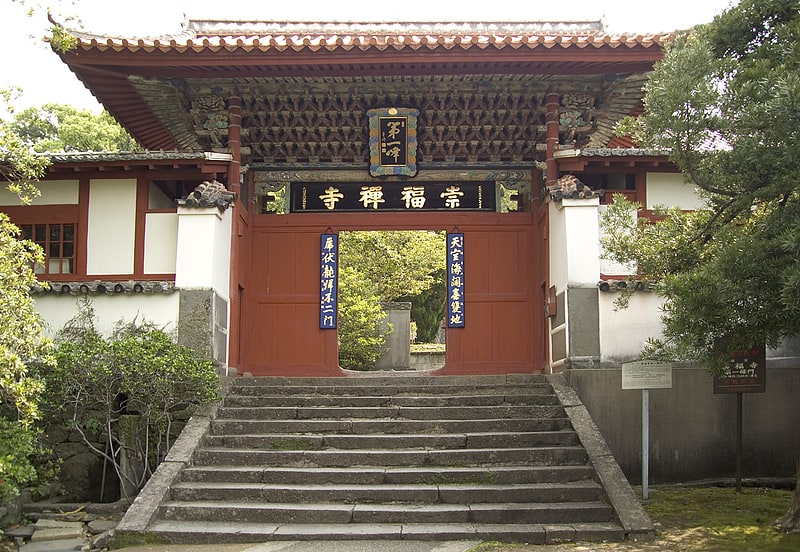
Also known as: 崇福寺
Zen temple with Ming-era architecture. Sōfuku-ji is an Ōbaku Zen temple that was built by the Chinese monk Chaonian in 1629 as the family temple of the Chinese from Fuzhou, Fujian Province who settled in Nagasaki.[10]
Siebold Memorial Museum
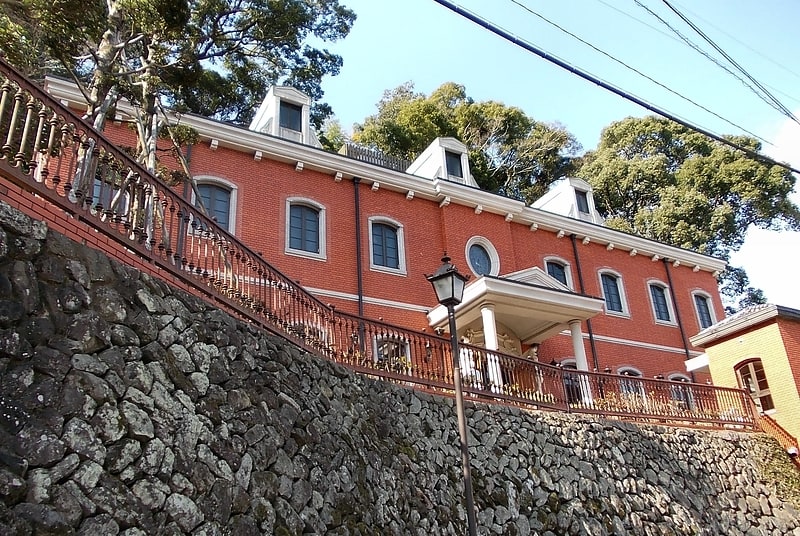
Also known as: シーボルト記念館
Exhibits on physician Philip von Siebold. Siebold Memorial Museum was opened in Nagasaki city in 1989 in honour of Philipp Franz von Siebold's great contributions to the development of modern science in Japan. The building is modeled on his former house in Leiden and is located next to the site of his original clinic and boarding school known as Narutaki Juku.
The museum displays 206 items classified into six categories describing Von Siebold's six-year stay in Nagasaki, the so-called "Siebold incident", and his great life work on Japan. It also exhibits his family tree and items about his beloved Japanese girlfriend Taki and their daughter Ine, who eventually became Japan's first female doctor.[11]
Address: 2-7-40 Naritaki, 850-0011 Nagasaki
Endo Shusaku Literary Museum
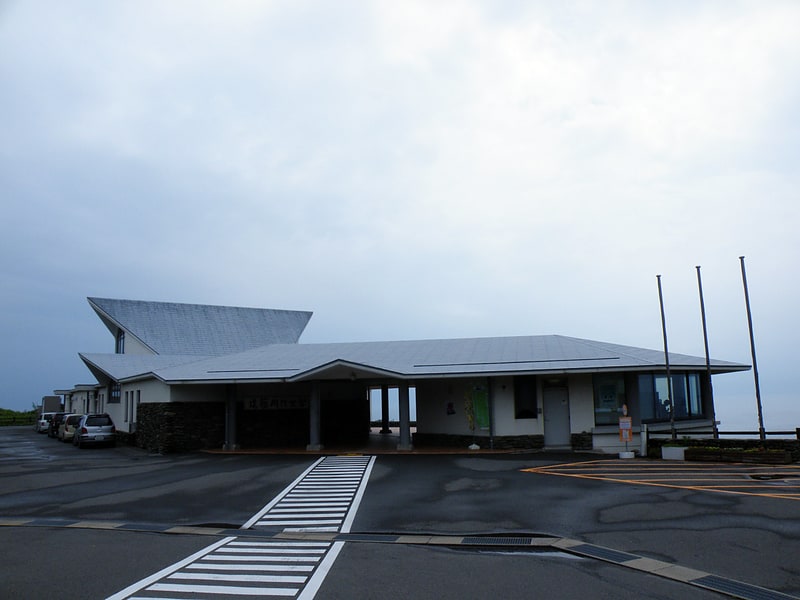
Also known as: 遠藤周作文学館
Museum honoring the work of Shūsaku Endō. The Endo Shusaku Literary Museum is a museum dedicated to the life and work of Japanese novelist Shusaku Endo. It is in the Sotome district in the northwestern part of the city of Nagasaki. Sotome is famed as the home of the hidden Christians and served as the scene for Endo's novel Silence.
Established in May 2000, the museum displays Endo's books, manuscripts, letters, photographs and favourite possessions including his writing desk, his Bible and rosary, and a statue of Mary inherited from his mother and kept at his bedside throughout his life.
The museum looks out over the Gotō Sea and Shitsu Culture Village, where a monument stands to Silence. It is inscribed with the words "Humanity is so sad, Lord, and the ocean so blue."[12]
Address: 77 Higashishitsumachi, 851-2327 Nagasaki
Confucius Shrine
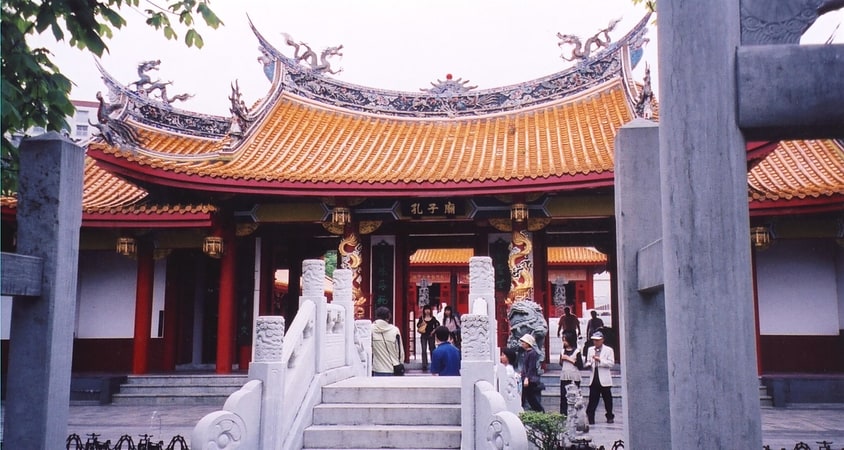
Also known as: 孔子廟
Confucian shrine with Chinese artifacts. Kōshi-byō is a Confucian temple in Nagasaki, Japan. Today the land on which it stands is owned by the Chinese Embassy in Tokyo.
First built in 1893 by Chinese residents of Nagasaki with the support of the Qing Dynasty government, the shrine was designed to serve as a place of worship and learning for the Chinese community, and housed a Confucian sanctuary and primary school. The buildings were severely damaged by the atomic bomb explosion on August 9, 1945 and were not restored and opened to the public until September 1967. The shrine was extensively renovated in 1982. Standing outside the shrine are 72 statues representing the 72 followers of Confucius.
A building at the rear of the shrine houses the Museum of Chinese History and Palace Museum. It features large illuminated photographs of the old Silk Road and models of early Chinese inventions such as the world's first seismograph. Displayed on the second floor are more than 80 treasure-class articles of varying antiquity on loan directly from the Chinese National Museum and Palace Museum in Beijing.[13]
Twenty-Six Martyrs Museum and Monument
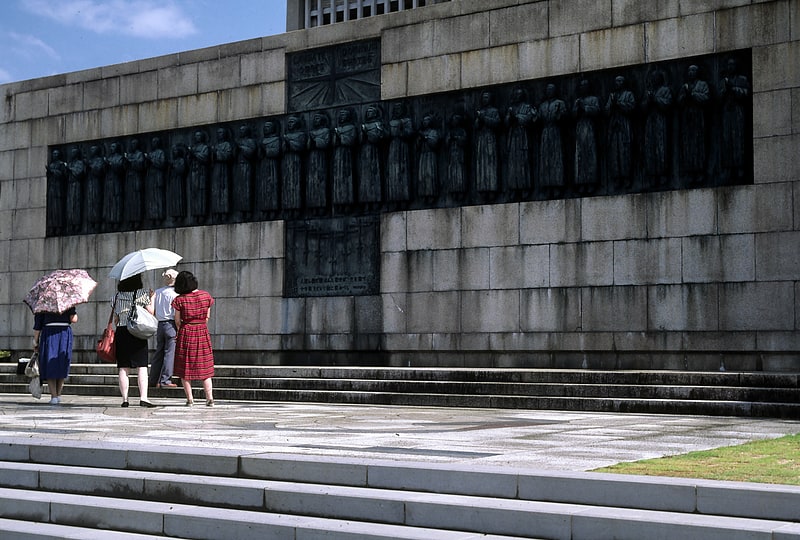
Also known as: 日本二十六聖人記念館
Memorial to Christians executed in 1597. The Twenty-Six Martyrs Museum and Monument were built on Nishizaka Hill in Nagasaki, Japan in June 1962 to commemorate the 100th anniversary of the canonization by the Roman Catholic Church of the Christians executed on the site on February 5, 1597. The 26 people, a mixture of 20 native Japanese Christians and six foreign priests had been arrested in Kyoto and Osaka on the order of Toyotomi Hideyoshi, the national ruler, for preaching Christianity. They were imprisoned, then later marched through the snow to Nagasaki, so that their execution might serve as a deterrent to Nagasaki's large Christian population. Hung up on 26 crosses with chains and ropes, the Christians were lanced to death in front of a large crowd on Nishizaka Hill. St Paul Miki is said to have preached to the crowd from his cross.
The main theme inherent in both the museum and monument is "The Way to Nagasaki" – symbolising not only the physical trek to Nagasaki but also the Christian spirit of the martyrs. The museum's collection includes important historical articles from both Japan and Europe (such as original letters from the Jesuit priest St Francis Xavier) as well as modern artistic works on the early Christian period in Japan. The displays are arranged chronologically into three periods: the early Christian propagation, the martyrdoms, and the persistence of Christianity underground during the persecution.
The main monument with an extensive bronze depicting the Twenty-Six Martyrs, was designed by Japanese sculptor, Yasutake Funakoshi. The work took Funakoshi four years to complete.
The exhibits include examples of "fumie" or treading images. Every year from 1629 to 1857, Nagasaki residents were forced to go through a ritual of stepping on bronze images of Christ or Mary to prove they were not Christians. Also to be seen are statues of the Virgin Mary in the guise of Buddhist deities such as Miroku (Hotei (Laughing Buddha)) and Kwannon Bodhisattva to which the hidden Christians prayed.
The Martyrs' altar was built as a memorial for the many people who gave up their lives. The image of a plum blossom in the centre of the altar was chosen because the plum tree blossoms in February – the month of the martyrdom of the 26 saints, who are commemorated on February 6.[14]
Address: 7-8 Nishizaka-machi, 850-0051 Nagasaki
Nagasaki Museum of History and Culture
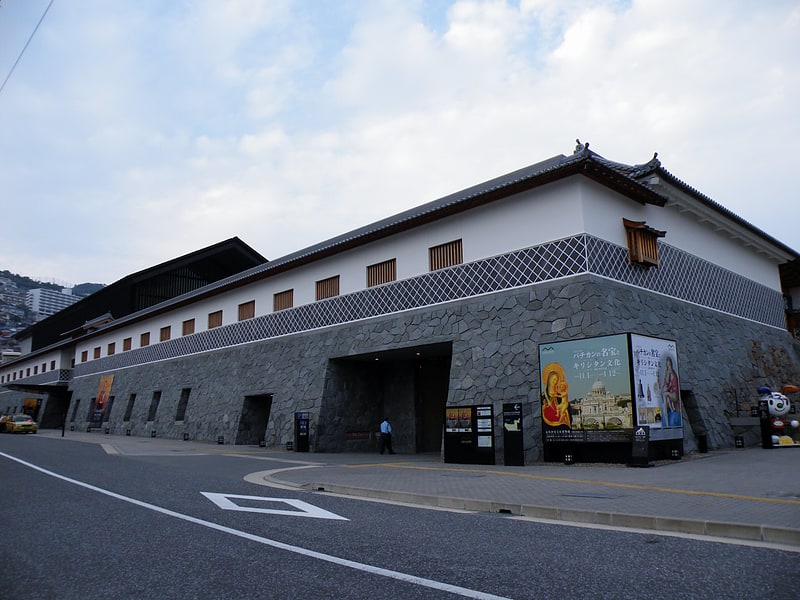
Also known as: 長崎歴史文化博物館
Culture museum devoted to Nagasaki. The Nagasaki Museum of History and Culture in Nagasaki, Japan is one of the few museums in Japan devoted to the theme of "overseas exchange".
The museum holds 48,000 items in its collection, including historical documents and arts and crafts, that tell the story of Nagasaki as the sole window opened to foreign countries during the period of national isolation. The museum also contains a reconstruction of part of the Nagasaki Magistrate's Office called bugyōsho, a local agency of the central government in the Edo period.
The permanent exhibition features exhibits dealing with exchange with the Netherlands, China and Korea, and shows artifacts brought to Japan by foreign traders. It also focuses on "Nanban" (Portuguese and Spanish culture) and the introduction of Christianity. The museum shows the role Nagasaki played in post-restoration Japan in the diplomatic sphere, as well as being at the forefront of modern medicine, printing, ship building and industrial technology.[15]
Address: 1-1-1 Tateyama, 850-0007 Nagasaki